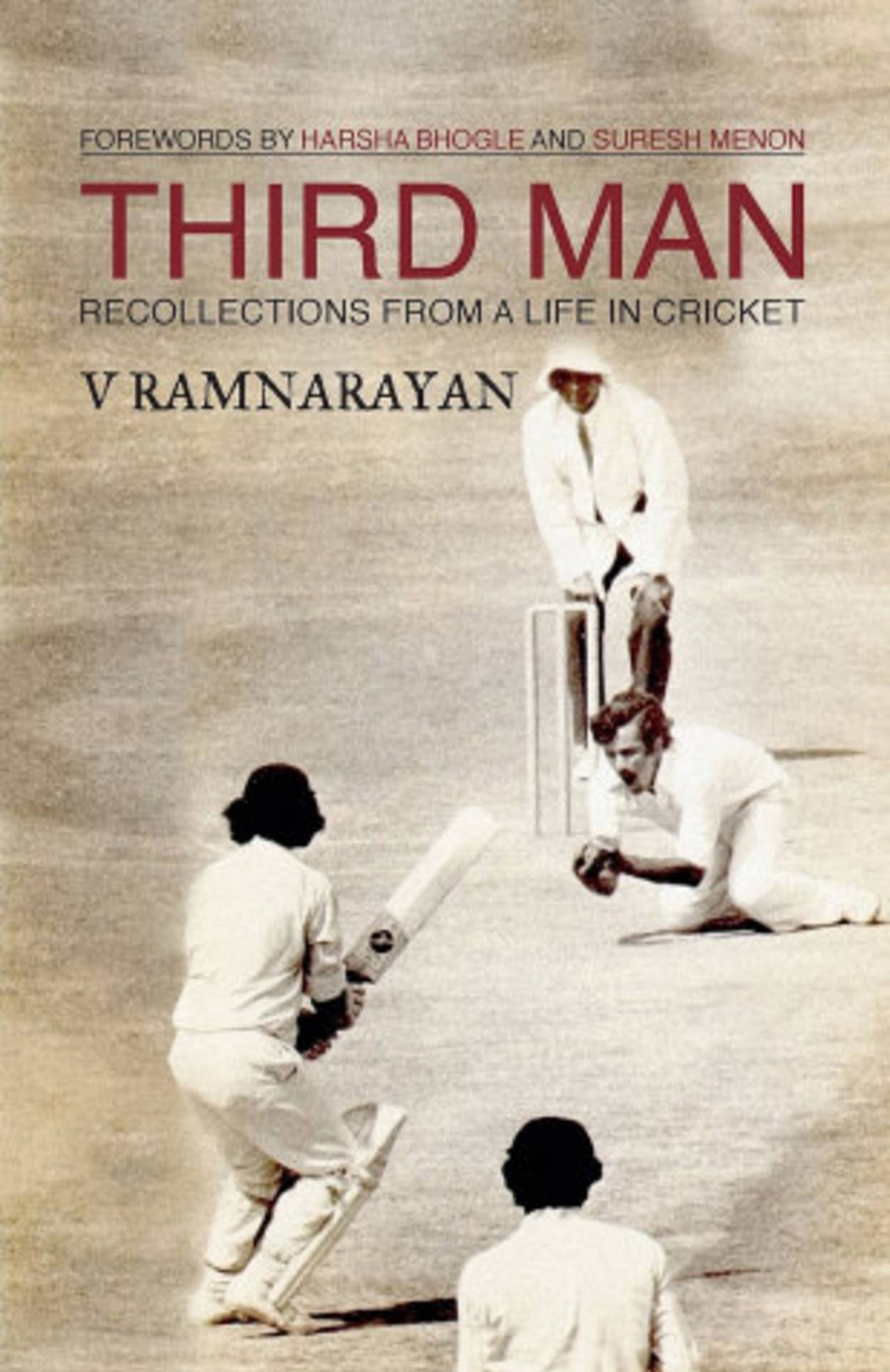These are dizzying days given the rate at which cricket books are being churned out in India. More than the many that contain the magic sales-magnet word "Tendulkar" on their covers, there are treats to be found elsewhere.
V Ramnarayan*'s
Third Man: Recollections From A Life in Cricket is one such. It is, it must be said, a singular and rich life; after a short but eventful first-class career that lasted five seasons - taking 96 wickets with his offspin at 23.23 - Ramnarayan is now an astute columnist, commentator, author, raconteur, editor (of
Sruti, a monthly performing arts magazine), and teacher at the Asian College of Journalism in Chennai.
It was a complete absorption into cricket that occupied his youth and has led now to a book that reads like a catharsis of sorts. "I played cricket because I could not help it," he writes early on. It is a sentiment every cricketer and even a wider audience of the sport's devotees will understand. Once the game has its hooks in you, it is hard to keep away from the damn thing, either as a player or a non-playing tragic.
Ramnarayan is a Madras man and grew up in a family of cricket nuts. He has even picked a team across generations of his clan, chock-full of medium-pacers (seven out of 14).
The largest chunk of the book recounts his experiences in Hyderabad cricket, starting with his State Bank of India club team and moving on to a first-class debut at the advanced age of 28. The title of the book refers to Ramnarayan's definition of his status on the national stage, where he was "recognized as someone with an outside chance of replacing Prasanna and Venkataraghavan in the Indian team". Like was often said of
Padmakar Shivalkar and
Rajinder Goel, quality left-arm spinners who played in the era of
Bishan Bedi.
During his five seasons Ramnarayan was often the leading wicket-taker for Hyderabad, at a time when the team was soaked in style, stylists and stories of them. ML Jaisimha, Tiger Pataudi, Abbas Ali Baig, Abid Ali - is there any surprise that 30,000 would turn up to watch a match at Fateh Maidan? A modern audience, clued in to the commerce and business of cricket, might roll their eyes at such long-gone devotion to first-class cricket, but there is no denying the eccentricity and chaos that kept first-class cricket in India buzzing. Ramnarayan, from relatively orderly Madras, was astonished to find umpires turn up late for club games in Hyderabad and Secunderabad, and at finding rival captains convicing him to wait for all their players to arrive.
Along with the nawaabi tempo, there was never a shortage of drama or skirmishes between cricketers and administrators, with rebellion often breaking out across the board. Like when the Hyderabad team was sacked on the morning of a Moin-ud-Dowla match. The previous day the entire team had walked out during nets, protesting the coach's conduct against the captain and senior players. The ban was lifted in two weeks, but the author and two of his team-mates were singled out as the villains of the piece. Ramnarayan also writes of other skulduggery that took place behind the scenes.
Ramnarayan's first-class career, full of unexpected turns, contained plenty of uncertainity, anxiety and frustration - which glimmer through the narrative. Yet a deep affection for his mates and for the lure of the game are hard to hide. Everywhere there are friends and previously unknown shades of personality: like
MAK Pataudi once being "close to a ticking off" for going off the field, with the assumption made that he had "taken a cigarette rather than a toilet break during a painfully long session". Or GR Viswanath's tale of hollering "No" to his batting partner, Abid Ali, and being asked, "
Kya bole?" (What did you say?) by Ali when he was three-quarters down the pitch.
It has taken an extraordinary memory to recollect names, faces and life stories, like that of
Ashwini Minna: a young legspinner who took over his family's business as a newspaper proprietor after he lost his father and grandfather to an assassin's bullets. Who bowled the first doosra the author ever saw? None other than
Erapalli Prasanna, in January 1979, in the nets at the Chinnaswamy Stadium in Bangalore:
If there must be complaining, it is that the editors have been remiss in their organisation of the material and its sequencing. A little more creativity and the recollections could have shone through to a greater degree.
The stories, though, are memorable. In one match against Bengal, Ramnarayan was hit on the shoulder by a bouncer. In response, he took a furious golf swing at the stationary ball and missed the bowler at the other end. The incident left him incensed all afternoon. At the end of the day Ramnarayan was told that he had been roundly ticked off for his behaviour by former India women's captain
Shanta Rangaswamy during her commentary stint on radio.
And the IPL believes it is a harbinger of women's empowerment by having four female commentators on duty this season.
Third Man: Recollections from a life in Cricket
V Ramnarayan
Westland
Rs 395, 380 pages
*V Ramnarayan blogs on ESPNcricinfo's Cordon
